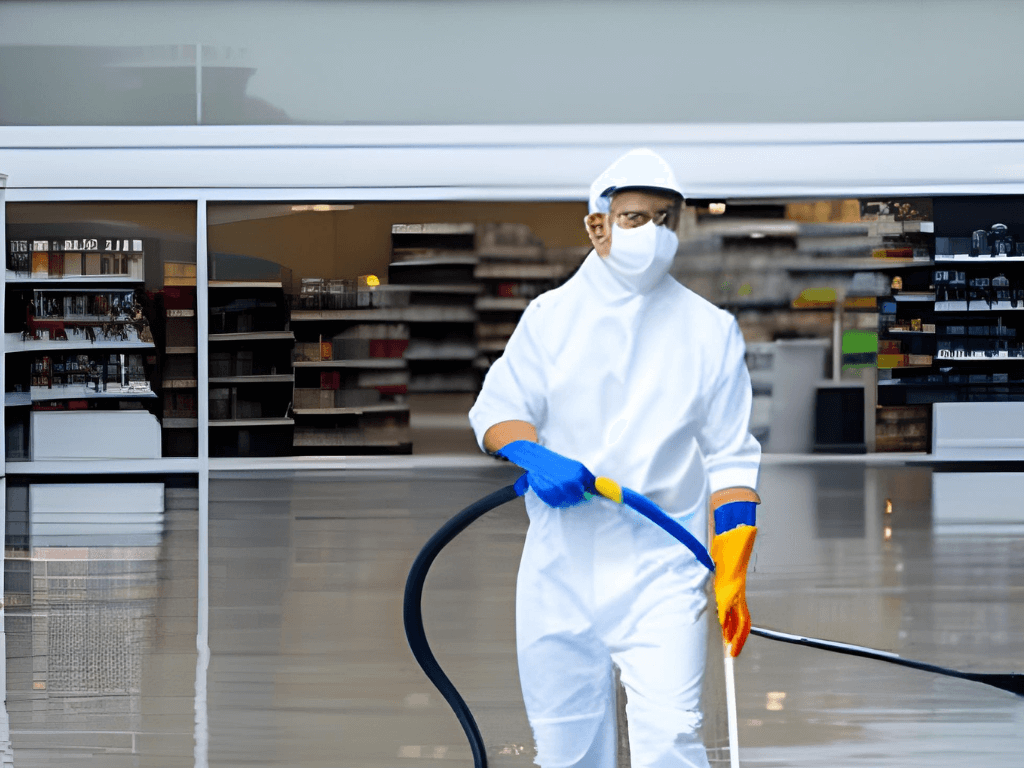Flood Damage Restoration for Business Owners
Flood Damage Restoration for Business Owners
Summary
This article delves into flood damage restoration. It acknowledges the fear that floods can instill in business owners, regardless of their establishment’s size. It begins by emphasizing the importance of understanding the severity of flood damage, vividly describing the scene that business owners might encounter after a flood, and ways to restore it.
The article outlines the key steps in flood damage restoration, from assessment to water extraction, structural drying, cleaning, mould prevention and remediation, and the final phase of restoration.
In summary, this piece provides a roadmap for business owners dealing with flood damage, emphasizing safety, expert assessment, and the pivotal role of professionals like AllAces Cleaning & Restoration in the journey to recovery.
The First Encounter: Understanding Flood Damage
Floods spare no one, and their aftermath can be nothing short of catastrophic. Before diving into restoration, let’s grasp the gravity of the situation.
Picture this: you arrive at your business premises after a stormy night to find water pooling on the floor, office equipment submerged, and documents sodden. It’s a nightmare scenario, but it happens more often than you’d think.
AllAces Tip: The first rule of flood damage restoration is to ensure safety. Before anything else, turn off electricity to prevent accidents, and if necessary, evacuate the premises. Safety should always come first.
Taking Action
Facing flood damage alone is like trying to conquer a mountain without the right gear. That’s where experts like AllAces Cleaning & Restoration come in. Their experience and knowledge can be a beacon of hope in these trying times.
The first step is Assessment. The experts from AllAces will survey the damage, providing a detailed report and an estimate. They’ll chart the course of action, guiding you through every step of the restoration process.
With the assessment complete, the restoration journey truly begins. Here’s a glimpse into what to expect:
Water Extraction and Elimination:
Once safety checks are finished, the next focus is getting rid of the water. This involves using pumps, wet/dry vacuums, or specialized tools to remove the standing water. It’s crucial to completely remove water from things like carpets, furniture, and items that can absorb water. If materials are too soaked and cannot be saved, they might need to be thrown away.
Checking Moisture and Drying:
After getting rid of the water, it’s important to check how much moisture is left during the flood damage restoration. Devices like moisture meters and thermal imaging cameras help find hidden pockets of moisture. To speed up the drying process, it’s essential to have good airflow and use dehumidifiers. Depending on how bad the damage is, this step could take several days.
Mold Prevention and Remediation:
Flood damage creates the perfect conditions for mold to grow, which can lead to health problems and more damage to your property. To stop mold from forming during flood damage restoration, the area needs to be cleaned with the right antimicrobial solutions. Any affected materials should be cleaned and dried thoroughly. In cases where mold has taken over, it might be necessary to call in professionals for mold removal.
Restoring Contents:
During the flood damage restoration process, your personal items and furniture may have been affected. Content restoration is all about saving and bringing these items back to life whenever possible. This includes a careful examination and cleaning of things like furniture, carpets, clothing, electronics, and anything else that might have lingering smells or contaminants.
Last Check and Keeping Records:
Before considering the flood damage restoration process complete, a final inspection is conducted to ensure that all necessary repairs and cleaning have been done to a satisfactory standard. Take photographs and document the entire restoration process, including receipts and invoices.
FAQs
- What safety precautions should be taken when dealing with flood damage at a business establishment?
The first rule of flood damage restoration is safety. Before anything else, turn off electricity to prevent accidents, and if necessary, evacuate the premises. Safety should always be the top priority. - What are the key steps involved in flood damage restoration?
The key steps in flood damage restoration include assessment, water extraction and elimination, checking moisture and drying, mold prevention and remediation, restoring contents, and a final inspection. - Why is professional assessment important in flood damage restoration?
A professional assessment is essential because it provides a detailed report and estimate of the damage. Experts like AllAces Cleaning & Restoration can guide you through every step of the restoration process, helping you understand the extent of the damage and the necessary actions to take.
Why Choose AllAces?
AllAces Cleaning & Restoration has more than 35 years of industry experience, handling extensive water and flood damage restoration projects. Our IICRC-certified technicians have the expertise and equipment to ensure effective results and the return of your property to a pre-loss condition.


